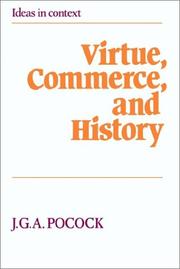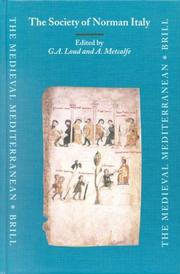| Listing 1 - 10 of 44 | << page >> |
Sort by
|
Dissertation
ISBN: 9036715946 Year: 2002 Publisher: Groningen,
Abstract | Keywords | Export | Availability | Bookmark
Book
ISBN: 9035224981 Year: 2002 Publisher: Maarssen Elsevier gezondheidszorg
Abstract | Keywords | Export | Availability | Bookmark
 Loading...
Loading...Choose an application
- Reference Manager
- EndNote
- RefWorks (Direct export to RefWorks)
Inhoud: 1. Feiten en cijfers: soorten incontinentie, oorzaken, blaaswerking; 2. Wat er aan te doen: opereren, medicatie, fysiotherapie, hulpmiddelen, vergoedingen voor incontinentiemateriaal, innovatie; 3. Leven met incontinentie: sociale gevolgen, ervaringen; 4. De rol van de verpleegkundige; 5. Meer weten.
605.15 --- 613.21 Basisverpleegkunde, procedures en interventies --- 613.64 --- incontinentie --- verpleegkunde --- 613.23 --- Incontinentie --- 605.9 --- bekkenbodemtraining --- blaastraining --- incontinentie (urine-incontinentie) --- luiers --- stressincontinentie --- nierziekten
Book
ISBN: 9027480478 Year: 2002 Publisher: Utrecht Het Spectrum
Abstract | Keywords | Export | Availability | Bookmark
 Loading...
Loading...Choose an application
- Reference Manager
- EndNote
- RefWorks (Direct export to RefWorks)
Nederlands 845 --- Geschiedenis --- Nederlands --- Spreekwoorden --- Nederlandse taal --- spreekwoorden --- woordenboeken --- woordenboeken. --- Woordenboeken.

ISBN: 0521276608 0521257018 0511720505 0511868790 9780521276603 9780511720505 9780521257015 Year: 2002 Publisher: Cambridge : Cambridge university press,
Abstract | Keywords | Export | Availability | Bookmark
 Loading...
Loading...Choose an application
- Reference Manager
- EndNote
- RefWorks (Direct export to RefWorks)
This book collects essays by Professor Pocock concerned principally with the history of British political thought in the eighteenth century. Several of the essays have been previously published (though they have not all been widely available), and several appear here for the first time in print.
Political science --- History --- Political philosophy. Social philosophy --- anno 1700-1799 --- Great Britain --- Social Sciences --- Political Science --- Political science - Great Britain - History - 18th century --- Political science - United States - History - 18th century --- United States --- France --- Politics and government
Book
ISBN: 9044000500 Year: 2002 Publisher: Den Haag Ten Hagen & Stam
Abstract | Keywords | Export | Availability | Bookmark
 Loading...
Loading...Choose an application
- Reference Manager
- EndNote
- RefWorks (Direct export to RefWorks)
Dissertation
Year: 2002
Abstract | Keywords | Export | Availability | Bookmark
 Loading...
Loading...Choose an application
- Reference Manager
- EndNote
- RefWorks (Direct export to RefWorks)
The present study was undertaken in the Department of Séguéla (Northwest of Côte d'Ivoire). The concerned population belongs to the Malinké ethnic group. The main objective was to identify some wild plants, which valorisation might contribute to the well-being of rural people living in the area. From ethnobotanical surveys, a list of 138 wild plants has been established. The gathered plants provide foodstuffs (98 species), medicinal products (47 species) and materials for domestic uses (22 species). An ethnotaxonomical study showed that the malinké system of naming and classifying wild plants is close to those of other peoples. The classification of wild fruit species is more structured and based on botanical considerations. The latest information indicates that fruit species are more important than the other plants. Concerning the identification of promising species, the data gathered from literature have indicated that the pharmacological activities of 11 medicinal plants jus tify their local uses in the studied region. The comparison with some similar works shows that the local uses of 57 % of medicinal plants are reported from other rural peoples living in tropical regions. Accordingly, it was considered that the malink popular medicine is more or less well-adapted to the existing diversity. Among edible products, wild fruit species were particularly investigated because of their numerical importance (98 species out of 138). The surveys show that the number of wild fruit known and usually consumed is limited in comparison with existing diversity. Some very appreciated fruit types are rich in vitamins A and C. But the consumption of fleshy ones is limited to the production season because they are not used as manufactured products (drinks, sweets, etc.) that might be conserved for a long time. The Malink are not interested in the domestication of wild plants, even those bearing locally appreciated fruit. Some wild seeds gathered during the surveys provide v egetable oils which constitute potential sources of nutriments (essential fatty acids), pharmacological products and raw materials for some industries (fuel, lubricant, soap, ink, varnish, etc.). Unfortunately, these resources remain hardly or not exploited in spite of their nutritional, medicinal and economical values. The local knowledge of these oleaginous species and their uses is decreasing from generation to generation. Therefore, they are threatened with destruction for agricultural purposes. In addition to ethnobotanical surveys, two species were particularly investigated : a wild leguminous, Uraria picta (Jacq.) DC. (Fabaceae) and a "water liana", Cissus populnea Guill & Perr. (Vitaceae). The profile of Uraria picta seeds (protein and lipid content) is very close to some cultivated legumes consumed in the region. The chemical score obtained after analysis, about 87 %, indicates a good balance of essential amino acids, which represent 38, 7 % of total amino acids. Accordingly, it was noticed that the seeds of Uraria picta should be considered as a potential source of essential amino acids for the diet of rural people. Concerning the "water liana" Cissus populnea, the investigation showed that the amount of collected sap depend on the extracting techniques and on the part of stem used. The analysis of the sap chemical composition reveals an satisfactory mineral profile, in line with the standards required by the European Union. Finally, the work provides a list of 31 promising wild plants that should be taken into account in projects of preservation and management of biodiversity in relation with sustainable development.
Wild plants --- Crops --- Drug plants --- Nonwood forest products --- Plant introduction --- Biodiversity --- food security --- Ethnobotany --- Indigenous knowledge --- Urania picta --- Cissus populnea --- Cote d'Ivoire. --- Cote d'Ivoire
Book
Year: 2002 Publisher: Pretoria : Council for geoscience,
Abstract | Keywords | Export | Availability | Bookmark
 Loading...
Loading...Choose an application
- Reference Manager
- EndNote
- RefWorks (Direct export to RefWorks)
Article
Abstract | Keywords | Export | Availability | Bookmark
 Loading...
Loading...Choose an application
- Reference Manager
- EndNote
- RefWorks (Direct export to RefWorks)
Article
Abstract | Keywords | Export | Availability | Bookmark
 Loading...
Loading...Choose an application
- Reference Manager
- EndNote
- RefWorks (Direct export to RefWorks)
Ivory Coast = Côte d'Ivoire ( = AOF ) --- Savannah --- ethnobotany --- useful plants

ISSN: 09285520 ISBN: 9004125418 9786610466702 1417536543 1280466707 9047401468 9781417536542 9789004125414 9789047401469 9781280466700 661046670X Year: 2002 Volume: 38. Publisher: Leiden [The Netherlands] ; Boston : Brill,
Abstract | Keywords | Export | Availability | Bookmark
 Loading...
Loading...Choose an application
- Reference Manager
- EndNote
- RefWorks (Direct export to RefWorks)
This work covers aspects of the society of southern Italy and Sicily from the 11th through to the 13th centuries. It covers the evolution of the social structure, to regional differences, the Church, and to the position of Greek and Arabic Christians and Muslims within the Norman Kingdom of Sicily.
Social structure --- Church and state --- Pluralism (Social sciences) --- History --- Catholic Church. --- Relations --- Italy, Southern --- Politics and government --- Cultural pluralism --- Structure sociale --- Eglise et Etat --- Diversité culturelle --- Histoire --- Catholic Church --- Eglise catholique --- Mezzogiorno (Italie) --- Social conditions --- Conditions sociales --- Organization, Social --- Social organization --- Anthropology --- Sociology --- Social institutions --- Cultural diversity --- Diversity, Cultural --- Diversity, Religious --- Ethnic diversity --- Pluralism, Cultural --- Religious diversity --- Culture --- Cultural fusion --- Ethnicity --- Multiculturalism --- Christianity and state --- Separation of church and state --- State and church --- State, The --- Relations. --- Politics and government. --- Church of Rome --- Roman Catholic Church --- Katholische Kirche --- Katolyt︠s︡ʹka t︠s︡erkva --- Römisch-Katholische Kirche --- Römische Kirche --- Ecclesia Catholica --- Eglise catholique-romaine --- Katolicheskai︠a︡ t︠s︡erkovʹ --- Chiesa cattolica --- Iglesia Católica --- Kościół Katolicki --- Katolicki Kościół --- Kościół Rzymskokatolicki --- Nihon Katorikku Kyōkai --- Katholikē Ekklēsia --- Gereja Katolik --- Kenesiyah ha-Ḳatolit --- Kanisa Katoliki --- כנסיה הקתולית --- כנסייה הקתולית --- 가톨릭교 --- 천주교 --- Social structure - Italy, Southern - History - To 1500 --- Church and state - Italy, Southern - History - To 1500 --- Pluralism (Social sciences) - Italy, Southern - History - To 1500 --- Italie méridionale --- Normands --- Italy, Southern - Politics and government
| Listing 1 - 10 of 44 | << page >> |
Sort by
|

 Search
Search Feedback
Feedback About UniCat
About UniCat  Help
Help News
News